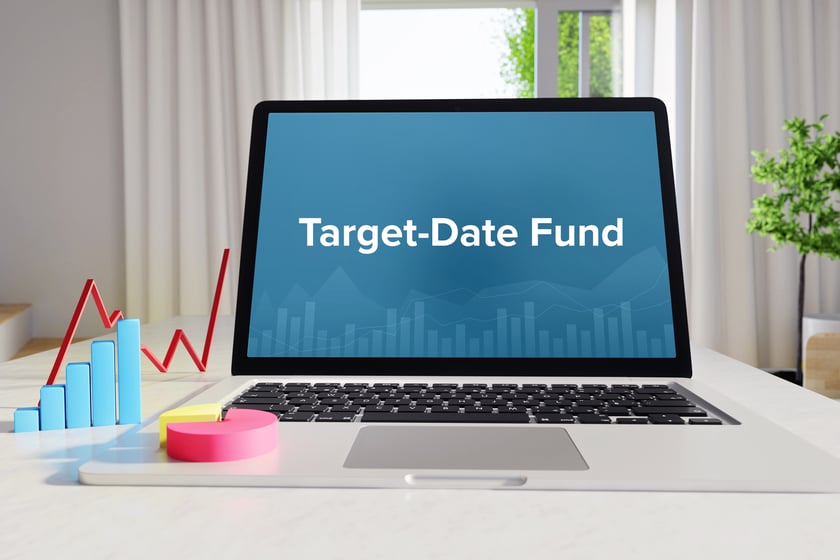
Target date funds are hugely popular options for retirement investing. How popular? Over half of all 401k plan participants hold target date funds.
But investors may be hurting themselves by going all-in on target date funds. This "set it and forget it" approach to retirement planning doesn’t work for everyone. That’s why it’s important to know the alternatives to target date funds.
Here are some alternative retirement plan options - and why you should consider them for your company’s or clients’ retirement planning.
What Is a Target Date Fund?
A Target Date Fund (TDF) is a product with a mix of investments. TDFs take into account the individual’s targeted retirement age or year and invest accordingly.
Initially, they invest in riskier options such as stocks. However, as the target date approaches, more of the fund shifts towards more conservative offerings such as bonds and cash, minimizing risk as the investor approaches retirement age.
A TDF is one type of QDIA retirement fund.
What Is a QDIA?
A QDIA is a qualified default investment alternative. When an employee contributes to a plan without specifying how the money should be invested, that’s a QDIA.
QDIAs are safe harbor default investment choices chosen by the DOL (Department of Labor).
TDFs are one type of QDIA, but they are not the only option. The DOL has designated three types of funds that qualify as QDIA:
- Target date funds
- Balanced funds
- Managed accounts
Before we talk about the different types of QDIAs, let’s examine why target date funds are not the only solution.
Why Do You Need Alternatives to Target Date Funds?
A one size fits all approach of target date funds is not the best.
Despite their popularity, target date funds did not perform well during the 2008 recession. The same happened during the Covid pandemic in March 2020. During a prolonged recession, these funds have historically not performed as well as expected.
Target date funds attempt to fit everyone’s needs, but everyone’s personal finance scenario is going to be different.
For the most part, target date funds don’t vary their allocations much until 10 years prior to their target date. So a target date fund of 2040 and 2060 will not vary much in their initial allocation. Over time, the holder of a 2040 plan and the holder of a 2060 plan will have similar returns over the initial years of their plan.
In addition, target date funds have been the subject of recent litigation. Major companies such as Walgreens, Estee Lauder, and Quest Diagnostics have all been the subject of lawsuits related to their TDF plans.
There has been a trend recently to recommend TDFs without discussing the potential drawbacks of such plans. Many future retirees may not understand what assets their TDF contains.
Balanced Funds as a QDIA
Balanced funds are usually invested in a fixed proportion of income and equity that does not change over time. The DOL defines a balanced fund as a portfolio that applies generally accepted investment theories, is diverse, and is designed to provide long-term appreciation and capital preservation.
Balanced funds may be easier to understand than target date funds. They can also be a good choice for someone who seeks more diversification than a TDF may offer.
A fiduciary should consider a few things prior to adopting a balanced fund as a QDIA:
- Are plan participants uniform in age, or diverse?
- Is the group a high- or low-turnover group?
If the age group is similar and the group is stable, a balanced fund may be a better QDIA than a target date fund. This is true if the mix of assets is correct for the group, and if the fees are reasonable.
Balanced Fund vs. TDF
Many balanced funds have existed for a long time and have a proven track record of success. They are less likely to have non-traditional investments.
However, balanced funds will not have the ability to select conservative investments as the investor grows closer to retirement age.
They do provide a better diversity between stocks and funds, unlike target funds which lean heavily on stock for the initial duration of their funds.
A balanced fund may also be a managed balanced fund, which has an investment fiduciary overseeing the fund. This proactive approach has the potential for higher returns.
Managed Accounts as a QDIA
Managed accounts must be managed by a professional investment manager. These accounts may be designed for different risk groups: conservative, moderate, and aggressive. They may have a static location of bonds, stocks, and cash, or they may be more managed.
Managed Account vs. TDF
Managed accounts can offer a more personalized experience, especially if the investor decides to be engaged.
Unlike a TDF, they can respond more quickly to changing market conditions. They take into account an individual’s risk tolerance and financial needs, as opposed to the one-size-fits-all approach of TDFs.
However, a managed account or TDF doesn’t have to be an either/or choice. Hybrid models exist, wherein an investor gets rolled into a managed account as they approach retirement age. This can allow an investor to alleviate any fears they may have about retirement, and help them make adjusts to their investments as needed.
Make the Granite Group Your Retirement Plans Consultant
A knowledgeable approach to retirement investing is critical. That’s why you need GGA Retirement. GGA is an independent consultant for 401k plans.
Employers and advisors who partner with us can see employee participation rates increase by 30%-50%, and contribution rates increase by 20%-35%. Our simple, successful 401k retirement plans improve the investment process and engagement for financial advisors, employers, and employees.
Contact us to find out how we can help your organization with your 401k offerings.







